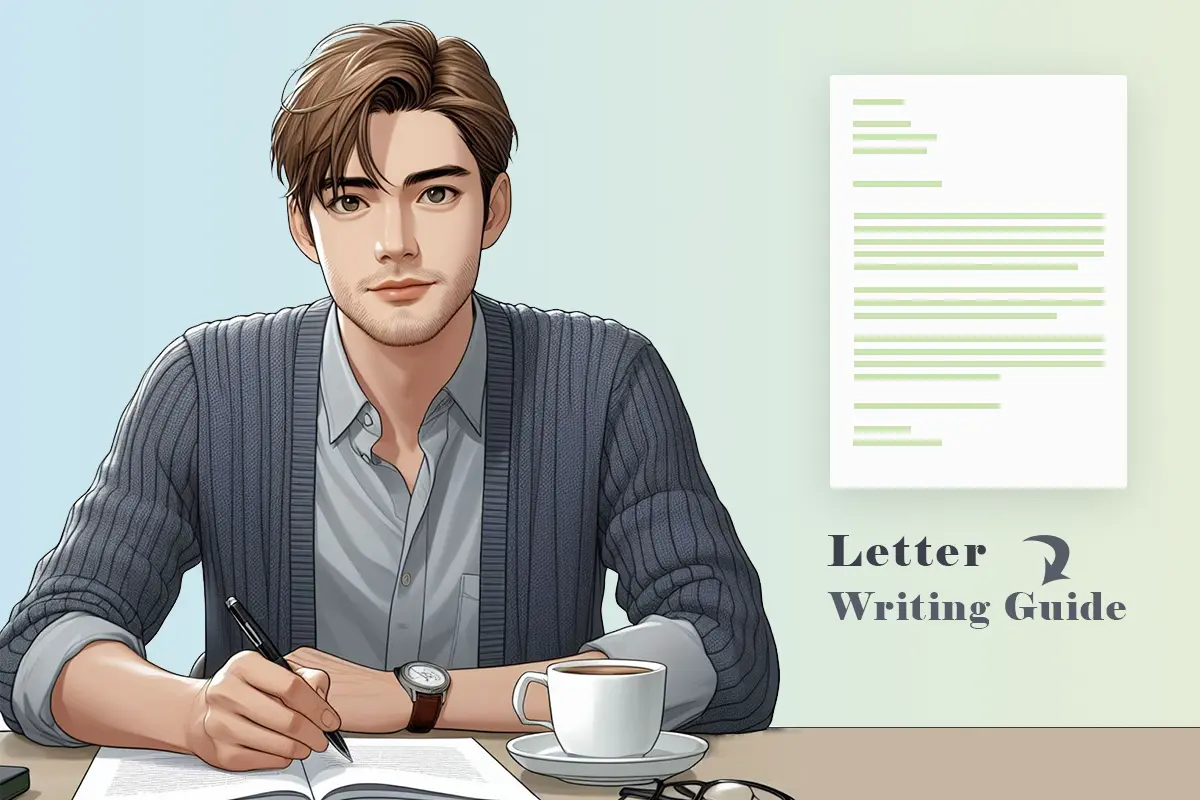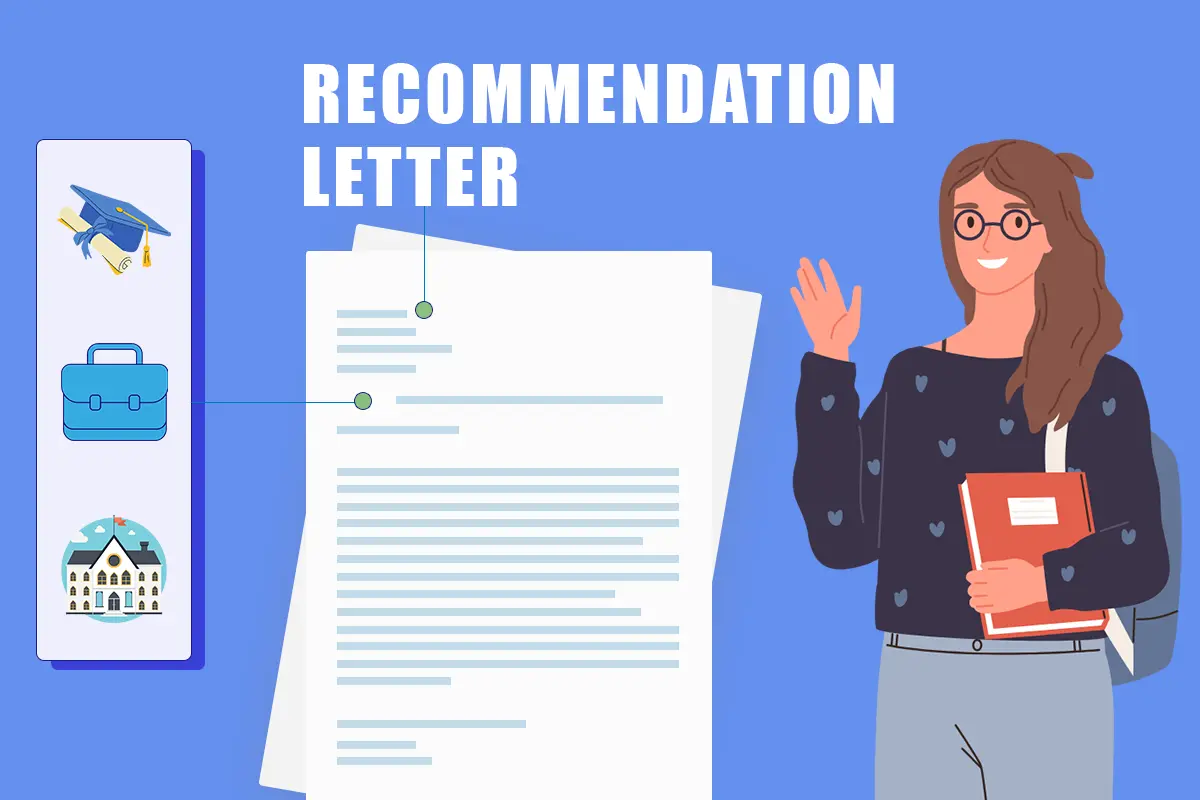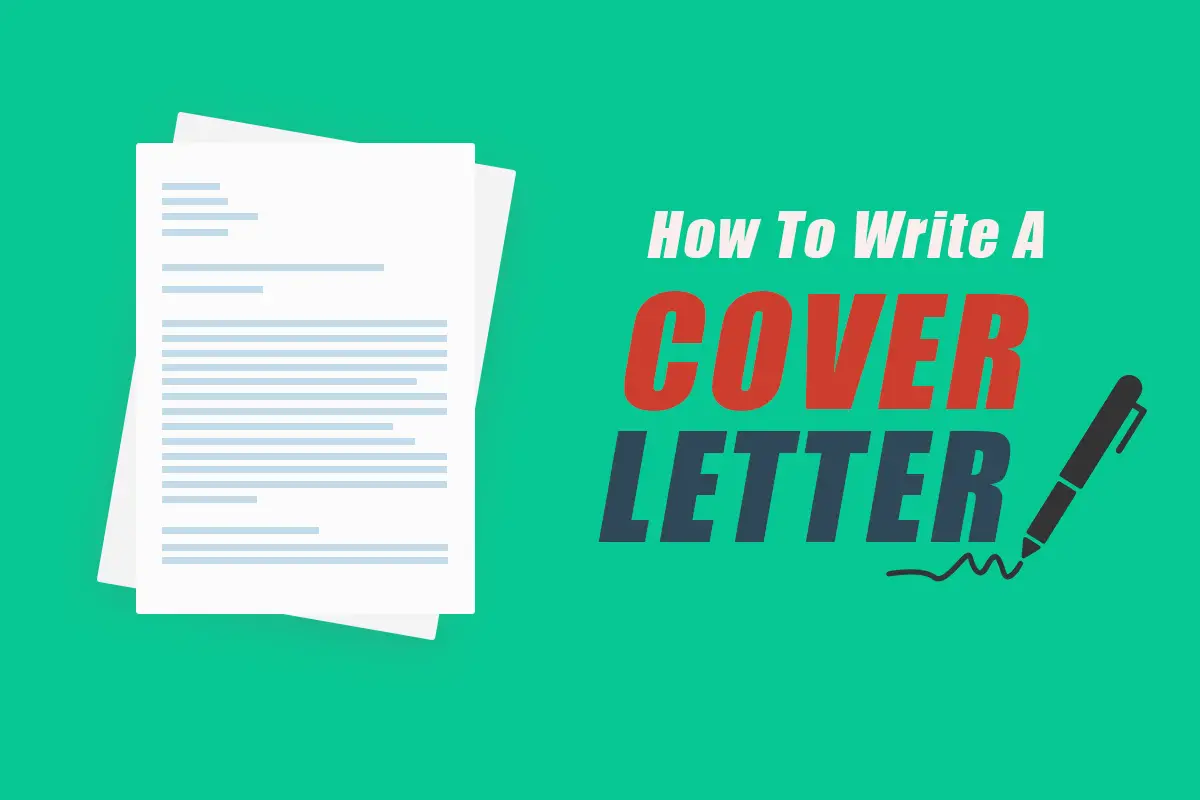How to Write a Letter With Format, Examples, and Tips
Master the art of letter writing with our comprehensive guide, including expert tips and sample letters to enhance your communication skills.

Rijvi Ahmed
Last updated on May 18th, 2024

When you click on affiliate links on QuillMuse.com and make a purchase, you won’t pay a penny more, but we’ll get a small commission—this helps us keep up with publishing valuable content on QuillMuse. Read More.
Table of Contents
Writing letters can seem to be out of date. But hold on! Even today, a well-written letter has a unique power. It allows for a deeper connection, a lasting impact, and can even sharpen your communication skills.
Whether you’re reaching out to a loved one, applying for a dream job, or crafting a formal request, knowing how to write an effective letter is a valuable asset.
This blog post will guide you through the essential steps of writing a letter, from introductions and greetings to crafting a compelling message and leaving a strong closing.
Why Is Writing Letter Skills Important?
In the age of instant messaging and social media, the art of letter writing might seem like a relic of the past. But even today, knowing how to craft a well-written letter holds significant value. Even though email and texting are common today, knowing how to write a letter is still important for a few reasons:
- More thoughtful communication: Compared to a quick text, writing a letter encourages you to take more time and think carefully about what you want to say. This can lead to clearer and more concise communication.
- Preserve relationships: Letters can hold sentimental value. A handwritten letter expressing gratitude or condolences can leave a lasting impression on the recipient, strengthening the bond.
- Formal communication: In some situations, formal letters are still preferred. This could be for job applications, complaints, or official requests.
- Develops writing skills: Letter writing is a valuable exercise that improves grammar, vocabulary, and overall writing skills. It requires planning, organization, and clear expression of ideas.
Knowing how to write a letter equips you to navigate various situations, from fostering deeper personal connections to leaving a strong impression in professional settings. It’s a valuable skill that allows you to craft messages that resonate with the recipient and leave a lasting impact.
Components of a Letter
To write a letter effectively, it’s essential to understand its basic components:
- Heading: This includes your address and the date. The heading is typically aligned to the right side of the page.
- Salutation: The salutation, or greeting, addresses the recipient. It’s essential to use the appropriate title and name of the recipient.
- Body: The body of the letter contains the main message or purpose of the communication. It should be clear, concise, and organized into paragraphs.
- Closing: The closing remark is a courteous way to end the letter. Common closings include “Sincerely,” “Best regards,” or “Yours truly.”
- Signature: Your signature signifies that the letter is authentic and acknowledges your responsibility for its content.
Types of Letters
Letters come in various forms, each serving a different purpose and requiring a unique format:
- Business Letters: These letters are used for professional communication, such as job applications, inquiries, or formal correspondence with clients or colleagues.
- Personal Letters: Personal letters are informal communications between friends, family members, or acquaintances. They may include updates, expressions of gratitude, or invitations.
- Cover Letters: Accompanying job applications, cover letters introduce the applicant and highlight their qualifications and interest in the position.
- Thank You Letters: These letters express gratitude for a gift, favor, or opportunity. They are a thoughtful way to show appreciation and strengthen relationships.
How to Write a Letter: Step-by-Step Guide
The general guidelines for writing a letter are as follows:
- Select the right type of paper
- Use the correct formatting
- Decide between block or indented format
- Include addresses and the date
- Include a salutation
- Write the body part of the letter
- Include a positive close
- Additional information
1. Select the right type of paper
This step is optional, but choosing the right paper can add a touch of professionalism or personality to your letter. Here’s a quick guide:
- Standard White Paper: Perfectly suitable for most informal letters or everyday communication.
- Resume Paper: For important documents like cover letters or recommendations, consider using higher quality resume paper that feels sturdier and more professional.
- Company Letterhead: If you’re writing on behalf of your company, use your company’s official letterhead which already includes your company information.
2. Use the correct formatting
Now that you’ve got the structure down, let’s focus on making your letter visually appealing and easy to read. A well-formatted letter creates a positive first impression and ensures your message is delivered clearly. Here’s how to achieve that:
- Font Choice: Skip the fancy fonts. They might look interesting but can be hard to read, especially for longer letters. Instead, choose fonts that are common and easy on the eyes. Think of fonts you see all the time, like Times New Roman or Arial. These fonts are designed for clear communication and won’t make the reader squint to understand your message.
- Finding the Font Size: Imagine someone reading your letter from a comfortable distance. You want the text to be big enough to read without being too large and overwhelming. A size between 10 and 12 points is generally considered the sweet spot. It creates a balanced look and ensures comfortable reading for most people.
- Line Spacing and Margins: Just like you wouldn’t want someone standing too close in a conversation, give your text some breathing room. Add a bit of space between lines of text, usually with single or 1.15 line spacing. Also, maintain margins on all sides of your letter. Margins shouldn’t be too small or they’ll make the letter look cramped, but they shouldn’t be so big that the text appears lost on the page.
By following these simple formatting tips, you can transform your letter from plain text to a visually appealing and professional document. Remember, a well-presented letter shows that you care about clear communication and respect the recipient’s time.
3. Decide between block or indented format
When it comes to formatting your letter, there are two main styles to consider: block and indented. Both are perfectly acceptable for formal letters, so the choice comes down to the look you want to achieve.
- Block Style: This is the most common choice for formal letters. Everything lines up neatly on the left margin, from your address and date to the body of your message. This format creates a clean and organized look, making it easy for the recipient to read and follow your thoughts.
- Indented Style: If you’d like your letter to feel less formal, the indented style is a good fit. Here, you indent the first line of each paragraph, typically by a tab or five spaces. This subtle separation between paragraphs adds a touch of personality while still maintaining a professional look.
Bonus Tip: Whichever style you choose, make sure your letter remains balanced on the page. If you go with indented paragraphs, consider moving your address and date to the right side to avoid everything clumping to the left.
The best format depends on your preference and the message you want to convey. Block style offers a timeless and professional look, while indented adds a hint of informality without sacrificing seriousness.
4. Include addresses and the date
Before diving into the heart of your message, take a moment to set the stage with some essential information. This helps establish context and ensures your letter reaches the right person. Here’s how to do it:
- Your Information (Optional): For casual notes to friends and family, you can skip this step. But in formal letters, like business correspondence or applications, including your address and contact details in the top left corner, shows professionalism and provides a way for the recipient to reach you if needed.
- The Date: Skip a line after your information (or the top of the page if it’s an informal letter) and write the date. The placement depends on your chosen format:
- Block Format: Simply write the date on the left margin, below your information.
- Indented Format: Move to the top right corner of the page and write the date there.
- The Recipient’s Address: When you’re writing to a friend across town or a business contact in another country, it’s crucial to include their address. Skip another line after the date and write the recipient’s full name and address on the left side of the page. This ensures your letter gets delivered to the right person.
Remember, Choose a format that works for you and maintain consistency throughout the letter. By including this initial information, you’re laying the groundwork for effective communication.
5. Include a salutation
Every good letter starts with a friendly hello. This opening sets the tone for your message and shows respect for the recipient. Here’s how to choose the right greeting, depending on who you’re writing to:
- The Friendly Touch: Know the person you’re writing to? Keep it casual and warm with a simple “Dear [Name].” It injects a personal touch, perfect for letters to friends, family, or even close colleagues.
- Formal Flair: Unsure of their name, or is it a business letter[1]? Bump up the formality a notch. Use “Dear Mr./Ms./Dr.” followed by their last name (like “Dear Ms. Jones”). This conveys professionalism and courtesy, making a great first impression in a more formal setting.
- Company Conundrum: Writing to a specific department within a company but their contact details are a mystery? Don’t fret! Turn detective. See if you can find the person’s name on LinkedIn by searching for the company and the department you’re reaching out to. If LinkedIn comes up empty, a polite call to the company can help. Simply explain you’re trying to reach the person who handles your specific inquiry, and the receptionist or assistant should be able to point you in the right direction.
- Universal Greeting: Absolutely no clue who will receive your letter. Use the classic “To Whom It May Concern.” This is a general salutation suitable for situations where the recipient isn’t known beforehand, such as open letters or letters addressing a specific role within a large organization.
Remember to end your greeting with a colon (:) or comma (,) to smoothly transition into the body of your letter. With a well-chosen introduction, you’re ready to dive into your message and make a positive first impression.
6. Write the body part of the letter
The main body of your letter is where you connect with the recipient and get your message across. Here are some tips to ensure it’s clear, concise, and impactful:
- Keep it Clear and Concise: Strive for a one-pager. Avoid rambling or including unnecessary details. Focus on the key information you want to convey and present it in a way that’s easy to understand.
- Start with a Friendly Greeting (Optional): A quick “Hello” or “Hope this letter finds you well” can set a positive tone, especially in informal letters. However, you can jump right into your purpose for formal letters.
- State Your Purpose Early On: Don’t bury the lead! Be upfront about why you’re writing. For instance, “I’m writing to express my interest in the [position name]” or “I’m reaching out to inquire about [topic].”
- Use Strong, Active Voice: Active voice makes your writing more engaging and easier to follow. Instead of “The report was completed by me last week,” write “I completed the report last week.”
- Organize Your Thoughts into Paragraphs: Break down your message into clear and well-organized paragraphs. Leaving a blank line between paragraphs improves readability and allows the recipient to visually follow your points.
- Conclude with Impact: Briefly summarize the main points of your letter in the closing paragraph. If you have a request, like an interview or a response, politely ask for it here. This is your chance to leave a lasting impression, so keep it clear and professional.
7. Include a positive close
It’s a small detail, but a professional closing shows the recipient you care. When it’s a new contact or a formal situation, a classic like “Sincerely” is a perfect way to end your letter.
Do you need a little warmth? Try “Best wishes,” “Kind regards,” or even just “Best.” These options add a friendly vibe while staying professional. If you prefer a more classic vibe, “Yours Truly” is also suitable.
Match your closing to the letter’s tone. Think about ending your letter with “Thanks” or “Talk soon!” if it’s nice. But keep in mind, you should always choose the aforesaid safer choices for really formal settings.
8. Additional information
The greeting, which is the “Hello” or “Dear” that opens a letter, is often rather simple. However, there are situations in which you need to educate the receiver with some further information following the greeting. Below is a summary of what you can add and its benefits:
- Heads Up on Incoming Mail: Use this if you’re sending something else to the recipient soon, like another letter or a package. For example, you could write “P.S. Look out for a brochure about the program in the mail next week!”
- Paper Trail Transparency: Inform the recipient that there are more documents within the envelope. For clarity’s sake, provide the number of papers. This is particularly useful for legal or commercial correspondence. You may put “Enclosed: Resume and Cover Letter” or “Enclosed (2): Contract and Agreement” in place of the ambiguous “Enclosures.”
- Carbon Copy Camaraderie: If you’re sending the same letter to other people, you can let them know with “CC” (carbon copy) or “Copies to” followed by the other recipients’ names. This avoids misunderstanding and keeps everyone in the same direction.
Remember, this extra information is like adding sprinkles to your cupcake – it’s a nice touch, but not always necessary. Use these tips when it makes your letter clearer and more helpful for the recipient.
Examples of Well-written Letters
1. Business Letter Example:

2. Personal Letter Example:

Tips for Writing an Effective Letter
A well-crafted letter can hold a certain charm and create a lasting impact. Whether you’re writing to a friend or a potential employer, here are some creative writing tips to ensure your letter gets the message across effectively:
- Know your audience: Tailor your tone and language depending on who you’re writing to. A letter to a close friend will be much more informal than a business application.
- Start strong: Hook your reader from the beginning. Briefly state your purpose in the first paragraph or two.
- Structure matters: Most letters follow a similar format. Include your contact information, the date, the recipient’s information, a salutation (Dear Ms. Jones, etc.), the body of the letter, a closing, and your signature.
- Organize your thoughts: Break down your message into clear and concise paragraphs. Every paragraph needs to focus on a specific concept.
- Clarity is key: Use easy-to-understand language and avoid jargon. Check your letter closely for typos and grammatical problems or mistakes.
- Be mindful of length: Aim for a concise and impactful letter. While there’s no strict word count, avoid rambling or going off on tangents.
- Personalize it (informal letters): For friends and family, add a personal touch by mentioning a shared memory or inside joke. This makes the letter more heartfelt and engaging.
- Proofread, then proofread again: Typos and grammatical errors can create a bad impression. Take your time and double-check your work before sending the letter.
By following these simple tips, you can craft a letter that is clear, concise and leaves a lasting impression. Remember, a well-written letter can be a powerful tool for communication, so take the time to do it right.
FAQs
Should I have a Fancy Talk or a Friendly Chat in a letter?
Formal letters are for work or people you don’t know well. Keep it polite, no shortcuts like “don’t” instead of “don’t write,” and follow a clear format. Informal letters are for friends and family. Here, you can be casual and use shortcuts.
How to begin a letter?
If unsure, use “Dear Mr./Ms./Dr. Last Name” for formal letters. For friends and family, “Dear [Name]” is great.
How long should a letter be?
There’s no exact word count, but keep it short and sweet. Get your message across clearly and avoid unnecessary details. One or two pages is a good rule of thumb, but it can change depending on what you’re writing about.
Should I add a personal touch?
Make your letter more special (informal only) by mentioning a fun memory you share with the person, a funny joke only you two understand, or something specific about them. You can also ask questions to get them to write back.
How did I get help with formatting?
The internet is here to help. If you want examples, search for “letter formatting guide” online. Many websites of universities or professional groups have guides you can use for formal letters.
Which is best: Handwritten or Typed?
Both work. Handwritten letters feel more personal, making them a good choice for special occasions. Typed letters are perfectly fine for most situations though.
What if I sent the wrong message?
What you do depends on If you prefer a more classic vibe, “Yours Truly” is also good. How bad the mistake is. For a small typo, a quick email apology is okay. But for a bigger mistake in a formal letter, you might need to write a handwritten apology explaining what went wrong.
How we've reviewed this article
Our content is thoroughly researched and fact-checked using reputable sources. While we aim for precision, we encourage independent verification for complete confidence.
We keep our articles up-to-date regularly to ensure accuracy and relevance as new information becomes available.
- Current Version
- May 18th, 2024
- Apr 3rd, 2024


